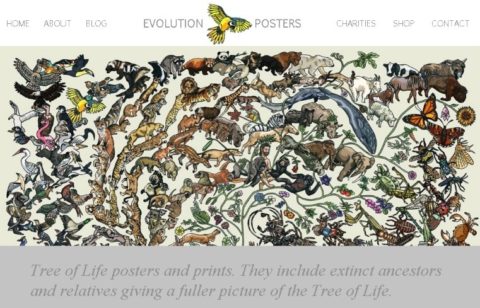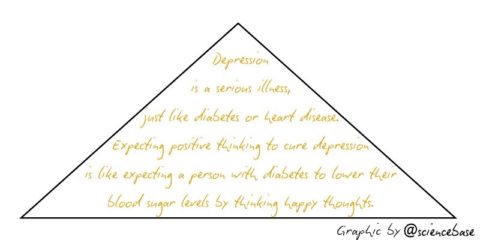Those in science and those without often have a different perspective on how knowledge is formed. Indeed, those people in mathematics perhaps have yet another perspective, mathematics requiring an axiomatic and deductive approach that generates definitive proofs such as those that demonstrate the irrationality of pi, e and the nature of the square root of -1, the Pythagorean rule for right-angled triangles.
Science, by contrast, requires observations of phenomena and an inductive, empirical approach that explains them giving us theories that can predict other phenomena and yet are perpetually awaiting the observation that shows up the limitations of said theory or at least requires it to be revised. There will never be an observation that overturns a solid mathematical proof. This is not to say that gravity, evolution, the second law of thermodynamics are “just” theories. Newton’s theories of forces embodied in his laws of motion are not overturned by Einstein’s theories of relativity they are refined at the upper extremes of speed, mass and distance. But, whereas the square root of -1 will always be the imaginary number “i”, there may come a day when what goes up, doesn’t necessarily come down again. Any attempt to prove that science leads to certainty leads to the mistaken understanding that scientific methodology is mathematical and provides that kind of proof. But, just to reiterate its very nature does not imply that the theory of gravity, is “just” a theory.
Then, there are the theories of society, economics, history, art, the humanities.
Historical events in Europe through the last centuries has led to a conflict between science and religion and the notion that science somehow displaces religion. Rationally, from the scientific perspective it does. But, religion by definition is beyond “this world” and so the observations and theories are not, from the religious perspective, subject to validation by science.
It is a dangerous assumption that science is the only valid body of knowledge. It isn’t unless we imagine that aesthetics, morality, emotion and faith can be digested and distilled too. Maybe they can, we just need a sufficiently sophisticated brain scanner to unravel the neurochemical equations. But, as it stands, the application of the scientific method to the humanities, the social sciences, does not help us understand our feelings..
Writing in the International Journal of Pluralism and Economics Education, mathematician and economist Asad Zaman of the Pakistan Institute of Development Economics, argues that the two big mistakes – conflating mathematical and scientific proof and assuming that the scientific method works in the social sciences – have crippled the development of our understanding of human beings and societies, but more to the point he is worried that social scientists using the term science in their field is just plain wrong.
“The failure to understand the basic realities of human experience has led to many disasters, and needs to be rectified by correcting this double mistake,” he argues. Fundamentally, “science is not useful for the study of subjective, internal human experience,” says Zaman. He’s not arguing against science, he’s arguing against the idea that the scientific approach can provide definitive answers in areas that are to all intents and purpose off limits to that approach. Indeed, there is a huge range of important questions that science cannot answer such as those pertaining to social economic, political, moral, aesthetic problems and issues.
In order that the humanities move forward and we are able to edge towards answers to the more philosophical questions surrounding our place in the universe. We must recognise that while science provides rational explanations and solutions for countless problems we must again incorporate human experience into the admissible body of knowledge to make true progress. It’s not just that social scientists should stop deifying science and adopting the hubristic stance of imagining that we can play god, they should embrace what science cannot do, seek the questions it cannot answer, and accept its limitations in the face of the human condition.
I asked Zaman for a comment on my take on his paper: “Science is not damaged by its uncertainty and its incompleteness,” he told me. “Scientific theories continue to be extremely useful and provide us with tools of extraordinary power.” He added that, “There is no need to prove science leads to certainty and will provide us with all possible knowledge. However, for psychological reasons arising from peculiarities of European history, this need was felt, and the attempt was made to prove that science is certain – the deification.”
The implications of recognising how science works and how it does not provide irrevocable universal knowledge is that scientific laws must remain valid from Alaska to Altair from 1 million years BC to the year 3000, beyond and before, beneath, between and behind. “However,” adds Zaman, “human experiences for, and solutions to social problems of today must be derived from studying the frameworks of consciousness we live in today, which are not the same as those of yesterday and will be different tomorrow.” He explains that, “The most important problems we face as human beings relate to our unique experiences – such the impending environmental catastrophe – and also relate to subjective experiences outside the scope of science. Thus, our most important problems relating to our experience reality, meaning of life, compassion, truth justice and how to achieve them, cannot be studied scientifically.”
Zaman, A. (2015) ‘Deification of science and its disastrous consequences’, Int. J. Pluralism and Economics Education, Vol. 6, No. 2, pp.181—197.
*Science and scientists well recognise the limitations of their endeavours and mostly do not self-deify. Indeed there was a paper some time ago discussing why it’s good for scientists to be stupid. As I see it, scientists know full well that mathematical proof is entirely different from scientific proof and that questions of the human condition – ethics, morality etc – cannot be answered by science. What science can do, however, is provide the information and explanations for a lot of the problems and the wonder we experience and give us the means to create the technology to deal with them. It is those outside science who adopt a scientific stance that are making a rod for their own back.
It is often those exclusively entrenched in the humanities who imagine that science does not recognise its limits and make assumptions about scientists themselves and their seemingly cold logical worldview. I know a lot of knowledgeable scientists interested in a wide range of arts and recognising the human condition, more perhaps than artists with a penchant or understanding of science who aren’t necessarily able to flip the art-science coin and recognise the beauty within science itself. But, again, the concern is mainly that those outside science who grasp at scientific principles for their humanities work. There is, after all, no application of quantum mechanics to the gender debate, no solution to racism in the second law of thermodynamics, and despite its name, relativity theory is not going to address issues of sexuality and human interaction.
![151026-Tobacco-vs-Meat-TWITTER[1]](https://www.sciencebase.com/images/151026-Tobacco-vs-Meat-TWITTER1.png)






